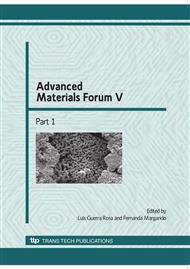p.198
p.206
p.214
p.220
p.226
p.233
p.239
p.245
p.253
Ecodesign Applied to Components Based on Sugarcane Fibers Composites
Abstract:
This work evaluates the technical performance and environmental impacts, when sugarcane bagasse is applied as reinforcement of polypropylene in a component instead neat polypropylene (PP). To achieve the goals of this study, the tensile and flexural properties and Life Cycle Assessment (LCA) as a function of fiber content were performed. In addition, different end-of-life (EOL) options for natural fiber composites were proposed, including incineration, recycling (with economic reuse) and discharging (landfill). Besides the good mechanical properties, natural fiber composites showed great environmental performance during the entire life cycle, mainly in the cultivation phase, when sugarcane consumes carbon while growing, contributing to global warming decreases. As a conclusion, sugarcane bagasse fibers production results in lower environmental impacts compared to neat PP and the recycling with economic reuse of sugarcane bagasse-PP composite was the best alternative to minimize environmental impacts after the end-of-life.
Info:
Periodical:
Pages:
226-232
Citation:
Online since:
January 2010
Keywords:
Price:
Сopyright:
© 2010 Trans Tech Publications Ltd. All Rights Reserved
Share:
Citation:


